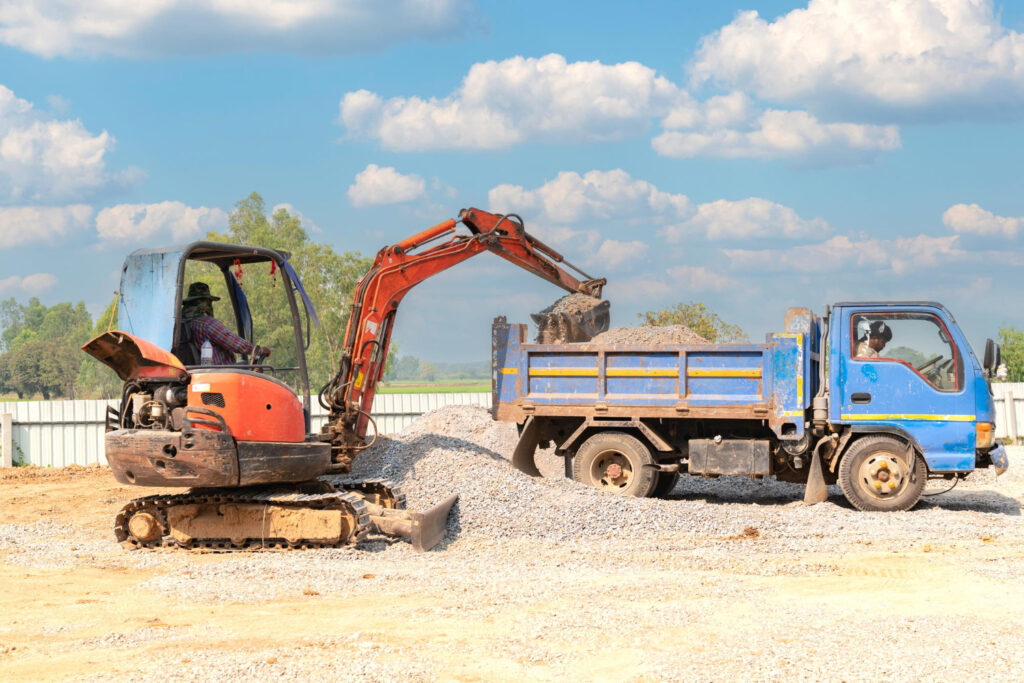Mini dumpers have become a game-changer in the construction and landscaping industries. These compact machines are designed to transport heavy loads in areas with limited access, making them indispensable for projects with tight spaces.
But with so many options on the market, how do you choose the right mini dumper for your specific needs? This guide will walk you through the key considerations to help you make the best choice, ensuring that your projects run smoothly and efficiently.
Table of Contents
ToggleWhat is a Mini Dumper?
A mini dumper is a small, motorized vehicle designed to transport materials such as soil, sand, and gravel. Unlike larger dump trucks, mini dumpers are compact and agile, making them ideal for use in confined spaces. They are commonly used in construction, landscaping, and agriculture to move materials quickly and efficiently.
Mini dumpers are versatile tools that can handle various tasks across different industries. In construction, they are perfect for transporting building materials to hard-to-reach areas. In agriculture, they can be used to move feed or hay bales. Landscaping projects benefit from their ability to maneuver through garden beds and narrow pathways with ease.

Benefits of Using Mini Dumpers in Hard-to-Reach Areas
Enhanced Accessibility
One of the most significant advantages of mini dumpers is their ability to access tight and confined spaces. These machines are designed to maneuver through narrow pathways and corners, making them perfect for projects where larger equipment cannot fit. Their compact size allows them to operate in areas where traditional vehicles would struggle, reducing the need for manual labor and increasing overall efficiency.
Increased Efficiency
Mini dumpers significantly boost productivity by automating the transportation of heavy materials. This reduces the time and effort required by manual labor, allowing workers to focus on other essential tasks. With a mini dumper, you can move more materials in less time, speeding up project completion and reducing labor costs.
Safety Improvements
Safety is a critical concern in any construction or landscaping project. Mini dumpers come equipped with features that enhance safety on challenging terrains. Many models include stability control systems, non-slip tires, and hydraulic tipping mechanisms to prevent accidents and ensure smooth operation. These safety features make mini dumpers an ideal choice for navigating uneven or unstable surfaces.
Choosing the Right Mini Dumper
Step 1: Assess Your Project Needs
Before selecting a mini dumper, it’s essential to evaluate the specific requirements of your project. Start by determining the types of materials you’ll be moving. Consider factors such as weight, volume, and consistency. Additionally, analyze the terrain type and environmental conditions you’ll be working in, as this will influence the type of mini dumper that best suits your needs.
Step 2: Decide on Load Capacity
The load capacity of a mini dumper is a crucial factor in its performance. It’s important to choose a model that can handle the weight of the materials you’ll be transporting without overloading. Overloading a dumper can lead to mechanical failures and potentially dangerous situations on-site. Carefully match the dumper’s capacity with your project’s demands to ensure safe and efficient operation.

Step 3: Consider the Type of Terrain
Different terrains require different types of dumpers. Wheeled dumpers are suitable for paved or firm surfaces, offering excellent mobility and speed. On the other hand, tracked dumpers provide superior traction and stability on muddy or rocky terrains. Understanding the conditions of your worksite will help you choose the right dumper for optimal performance.
Step 4: Power Source Selection
Mini dumpers are available with diesel, petrol, or electric power sources. Each option has its pros and cons. Diesel engines offer high torque and are ideal for heavy-duty tasks, but they can be noisy and emit more pollution. Petrol engines are quieter and more suited for smaller tasks.
Electric dumpers are environmentally friendly and quiet, but their battery life may limit their usage on extensive projects. Consider emissions, noise levels, and operational costs when selecting the power source that aligns with your needs.
Step 5: Evaluate Maneuverability
Maneuverability is crucial when working in tight spaces. Examine the turning radius and overall size of the mini dumper to ensure it fits your workspace. Features like hydraulic tipping and swivel functions can enhance maneuverability, allowing the dumper to access hard-to-reach areas easily. Choose a model that offers the flexibility required for your specific project environment.
Step 6: Check Additional Features
When choosing a mini dumper, look for additional features that can improve its functionality and convenience. Hydraulic lifts, advanced tipping mechanisms, and operator comfort are essential considerations. Regular maintenance requirements and support services from the manufacturer should also influence your decision, as reliable service ensures the dumper remains in top working condition.
Conclusion
Choosing the right mini dumper for hard-to-reach areas can significantly impact the success of your construction or landscaping project.
By assessing your project needs, considering load capacity, evaluating terrain type, and selecting the appropriate power source, you can find a dumper that meets your specific requirements.
Remember to factor in additional features and maintenance services to ensure long-term efficiency and performance.
For more personalized advice or to explore rental options, visit Makana Hire and connect with our experts today. Transform your project with the right tools and expertise, and see the difference a mini dumper can make.
FAQs
How much can a mini dumper carry?
Mini dumpers come with varying load capacities, typically ranging from 500 kg to 2000 kg. The capacity you need will depend on the materials you’ll be transporting. For example, a small landscaping project might require a dumper with a 500 kg capacity, while a large construction site may need something more robust.
What is the width of a mini dumper?
The width of mini dumpers varies depending on the model, but they generally range from 700 mm to 1200 mm. A narrower dumper is better suited for tight areas, whereas a wider model may offer more stability and load capacity.
How do you start a mini dumper?
Starting a mini dumper depends on its power source. Diesel and petrol models typically require a key or button ignition, similar to a vehicle, while electric models often start with a switch. Always refer to the manufacturer’s manual for specific starting instructions and safety guidelines.









